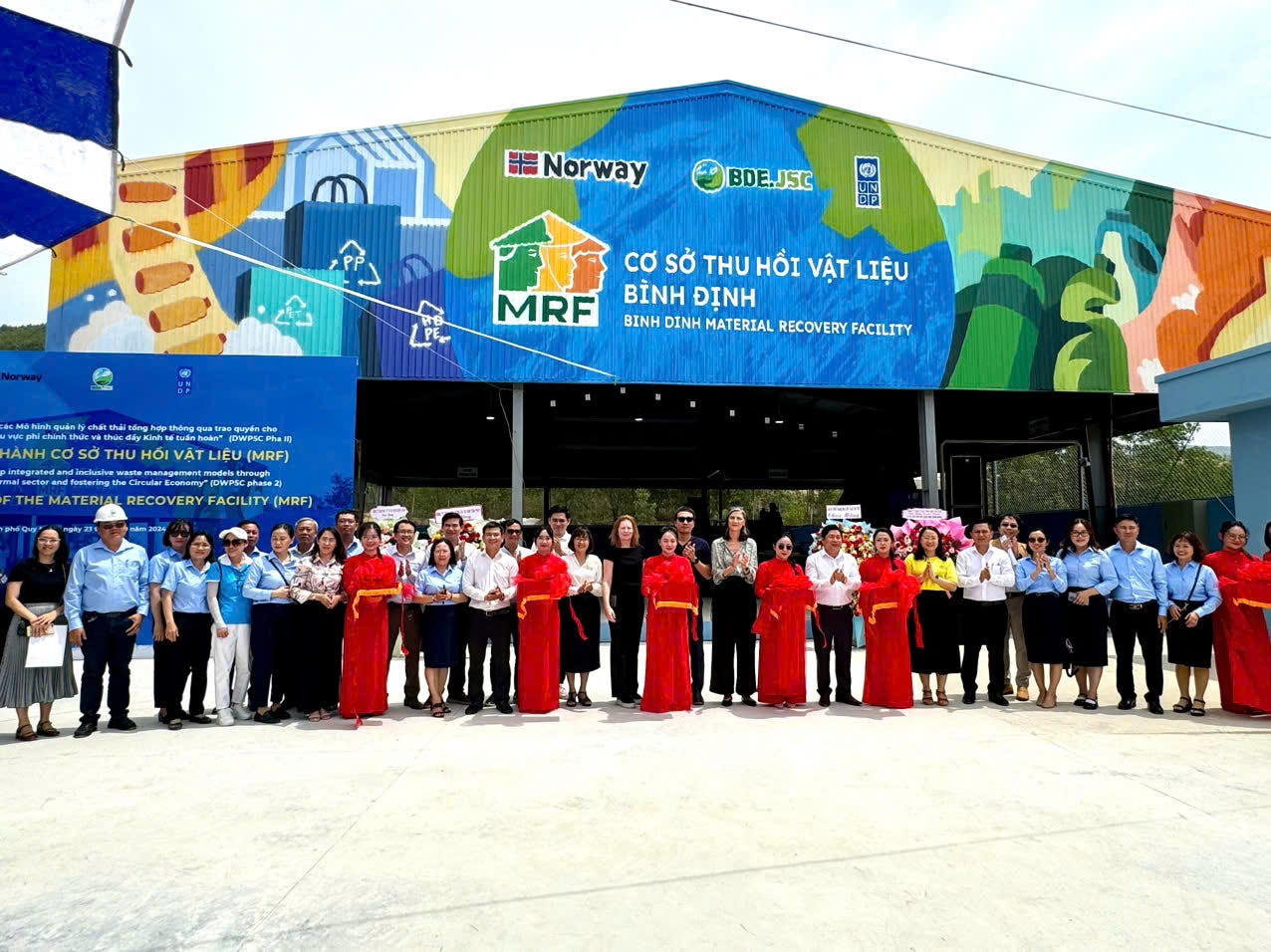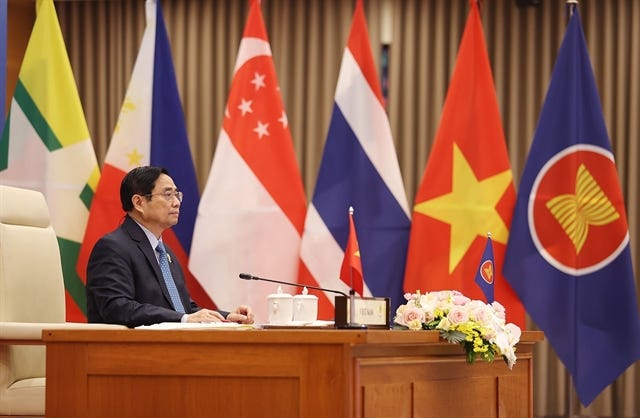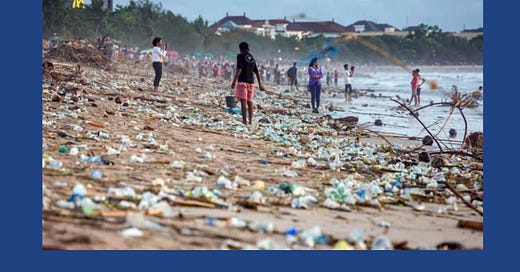🌎 The ASEAN Circular Economy Chronicle: Issue #1
When life gives you waste, make a circular economy – and ASEAN's got enough "lemons" to make something spectacular
Hey there!
If you’ve been following us long enough, it’s no longer new to hear about the waste crisis in Southeast Asia.
👉🏻 Read our piece on The spooky side of Halloween is the waste it produces
You know, those viral images of plastic-choked rivers and overflowing landfills?
But, you might not know that behind these challenges lies one of the biggest economic opportunities of our generation.
Every year, ASEAN generates 150 million tons of municipal solid waste.
That's not just an environmental nightmare – we're literally throwing away $120 billion worth of resources annually.
So, here's where it gets exciting: ASEAN, as one of the world's most dynamic economic regions, is perfectly positioned to turn this crisis into an opportunity.
🔍 Where we stand: The big picture

The transformation is already beginning.
Across Southeast Asia, from Singapore's smart recycling systems to Vietnam's emerging circular manufacturing hubs, we're seeing innovation that would have seemed impossible just a few years ago.
The ASEAN Circular Economy Stakeholder Platform has become a catalyst for change — connecting innovators, businesses, and policymakers across borders.
With the youngest population among all global regions (median age of 30.2 years), a rapidly growing middle class, and a manufacturing sector that's becoming increasingly sophisticated, ASEAN could become the world's leading laboratory for circular innovation.
The Framework: More than just paper planes

ASEAN's journey toward a circular economy got its official kickstart in October 2021, when the ASEAN Framework for Circular Economy was adopted at the 38th ASEAN Summit.
You might be thinking, "Great, another policy framework..." But, actually, ASEAN’s approach this time is pretty interesting.
Led by Indonesia and supported by all member states, this wasn't just another policy document gathering dust on a shelf.
It’s a regional playbook – one that recognises you can't apply the same solutions in bustling Singapore as you would in rural Cambodia.
🌟 It's built on five strategic priorities:
Harmonising circular economy definitions and concepts across ASEAN
Driving circular economy innovations in key sectors
Creating standardised metrics and indicators (because what gets measured gets managed!)
Promoting awareness and capacity building
Building partnerships for circularity
Unlike many regional frameworks that take a one-size-fits-all approach, ASEAN's framework acknowledges the diversity of its member states.
It's designed to be flexible enough to accommodate different development levels while pushing everyone toward the same goal – a more sustainable, circular future.
💬 The reality check: How’s it really going?
Let's keep it real. The effectiveness is... Well, it's complicated. While there's definitely momentum (looking at you, plastic bag bans and zero-waste campaigns! 👀), we're seeing mixed results.
🥊 The challenges are…
Limited financial resources: Small businesses are struggling with the upfront costs of going circular
Skills gap: We're short on repair and refurbishment experts – turns out fixing things is an art!
Informal waste sector complexities: Millions of informal workers need better protection and integration
Data collection headaches: Without proper metrics, we're basically trying to solve a puzzle blindfolded
Cross-ministerial silos: Different government departments often play their own tune instead of creating a symphony
Limited incentives: Currently, virgin materials are often cheaper than recycled ones (talk about backwards pricing! 🤦)
But here's where it gets exciting!
🎯 The opportunities are massive:
A young, eco-conscious population ready for change
Growing investor appetite for sustainable projects
Emerging green jobs across various sectors (ILO estimates up to 5 million new jobs in green sectors by 2050!)
Regional cooperation platforms like the ASEAN Circular Economy Forum
Rising green finance opportunities
Technological advancements in waste management and recycling
Strong potential for regional knowledge sharing and best practices
Increasing public awareness and support for sustainable initiatives
🌎 Global Plastics Treaty and just transition
ASEAN is positioning itself within the discussion of the Global Plastics Treaty, emphasising the importance of just transition.
👉🏻 Read our piece on the Global Plastic Treaty 2024
This means ensuring that as we move towards a circular economy, no one gets left behind – especially informal waste workers and vulnerable communities.
The focus is on creating professional opportunities while maintaining flexibility and providing social benefits.
Our take? There’s hope, but we need action
While ASEAN's circular economy journey has challenges, the potential for transformation is ginormous.
However, let's address the elephant in the room: regional political cooperation isn't exactly smooth sailing.
The ongoing Myanmar crisis has created tensions within ASEAN, while South China Sea disputes continue to complicate regional cooperation efforts.
These could impact circular economy initiatives, particularly cross-border waste management and resource-sharing programs.
On the flip side, there’s an opportunity: environmental cooperation could serve as a diplomatic bridge, creating common ground even amid political differences.
The framework and awareness are there, but what we need now is accelerated implementation, stronger political will, and more concrete action.
ASEAN's strength lies in its diversity and collective potential – if member states can align their circular economy goals with regional cooperation, we might just see a sustainability revolution in Southeast Asia!
Coming up - Your country-by-country guide
There’s a lot to cover when it comes to policy implementation and progress in Southeast Asia. So, we’re going to start a series specifically about just that!
Expect the coming weeks to include the following deep dives:
🇸🇬 Singapore: The smart nation's circular tech revolution
🇲🇾 Malaysia: Transforming palm oil industry through circular innovation
🇮🇩 Indonesia: Navigating archipelagic waste management solutions
🇹🇭 Thailand: Leading the Zero Waste movement
🇵🇭 Philippines: Island solutions for circular economy
🇻🇳 Vietnam: Emerging circular manufacturing hub
And more!
Got thoughts on ASEAN's circular economy journey? Drop them in the comments below! 👇
P.S. Living in Spain has given us a fascinating perspective on circular economy initiatives across different regions.
But hey – nothing beats local insights! As Southeast Asians abroad, we'd love to hear your on-the-ground experiences for our upcoming country deep-dives.
After all, we’re just two tias that love to gossip we’d love to learn and hear from you! 👀
Share your stories, challenges, and wins in your country's circular economy journey. Let's make this chronicle truly represent our diverse ASEAN voices!




